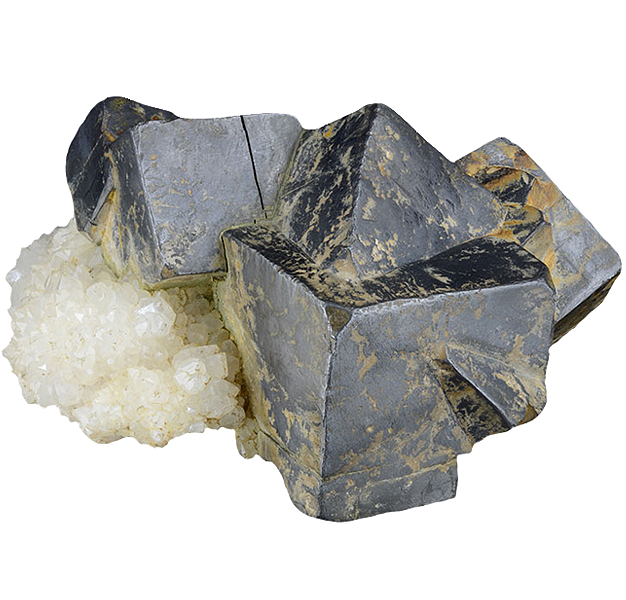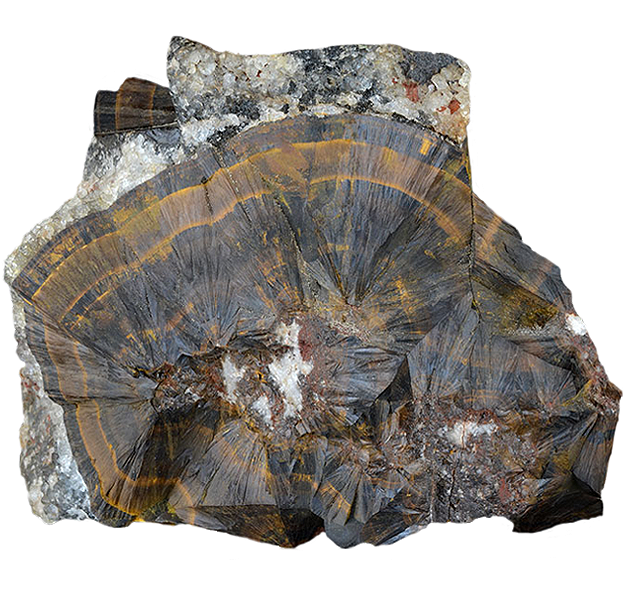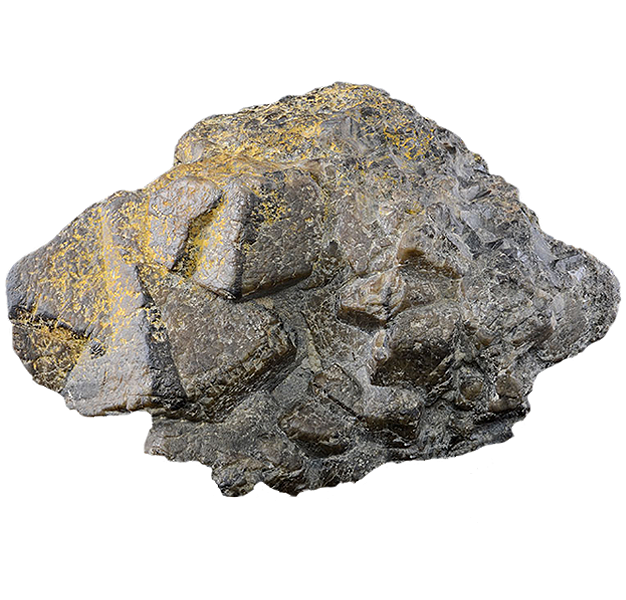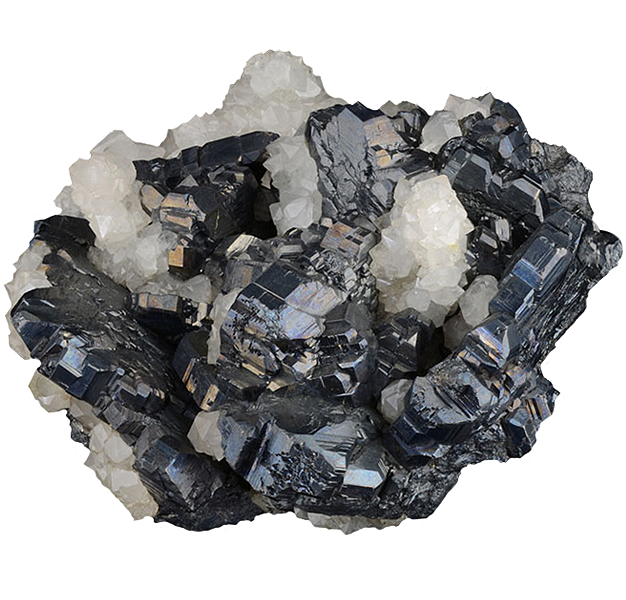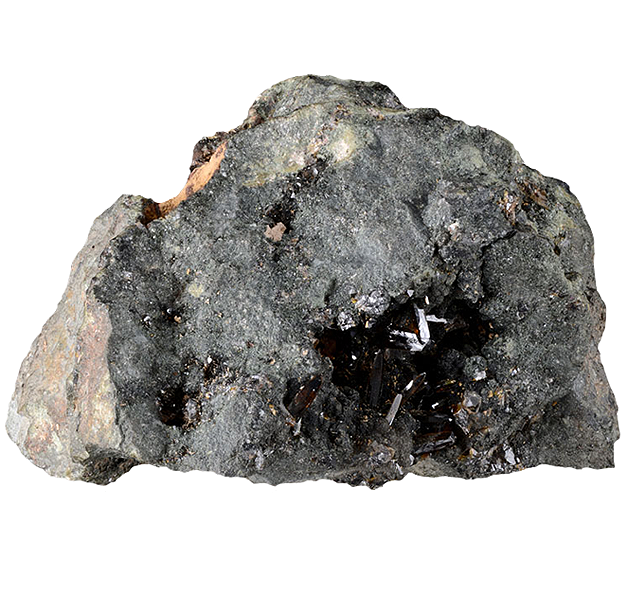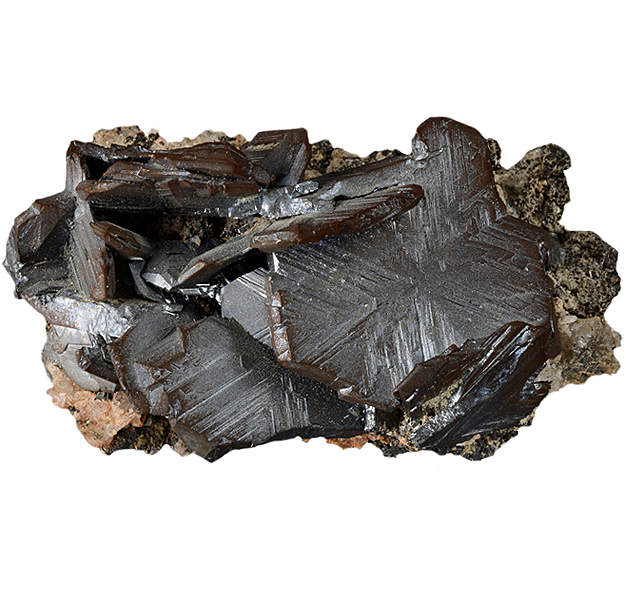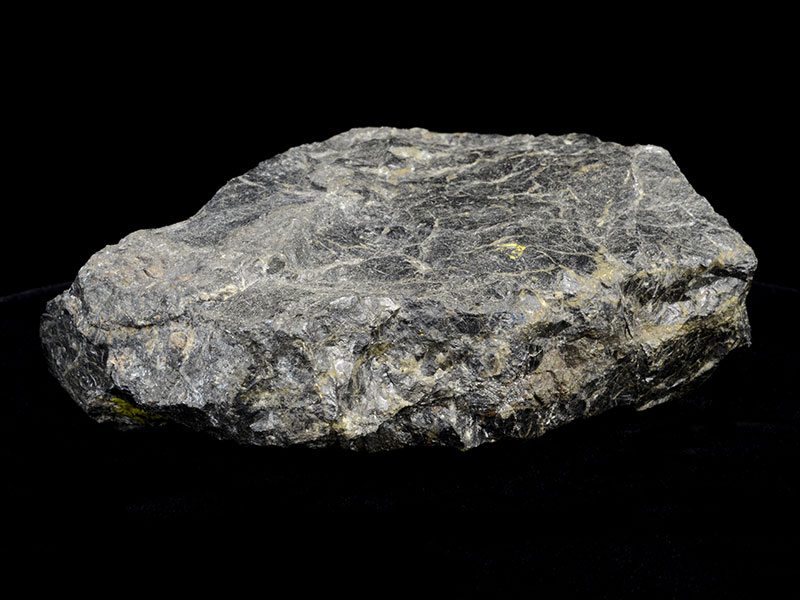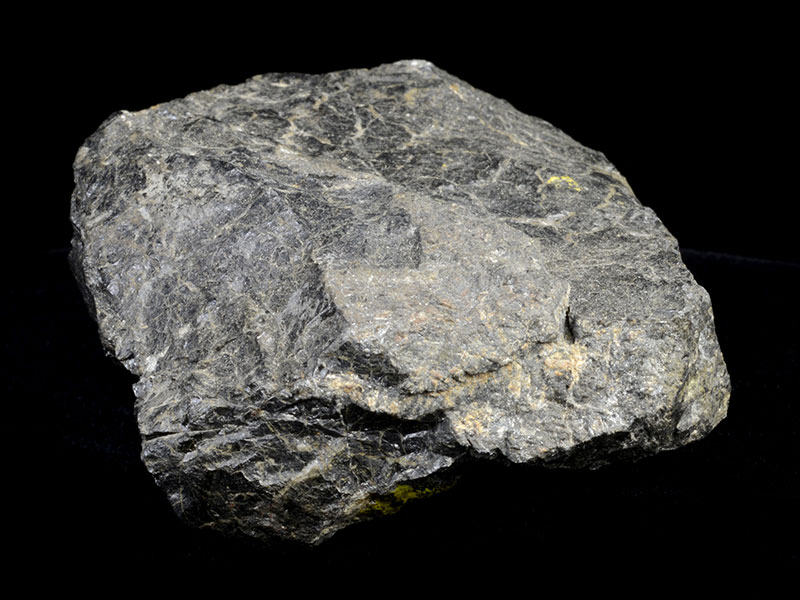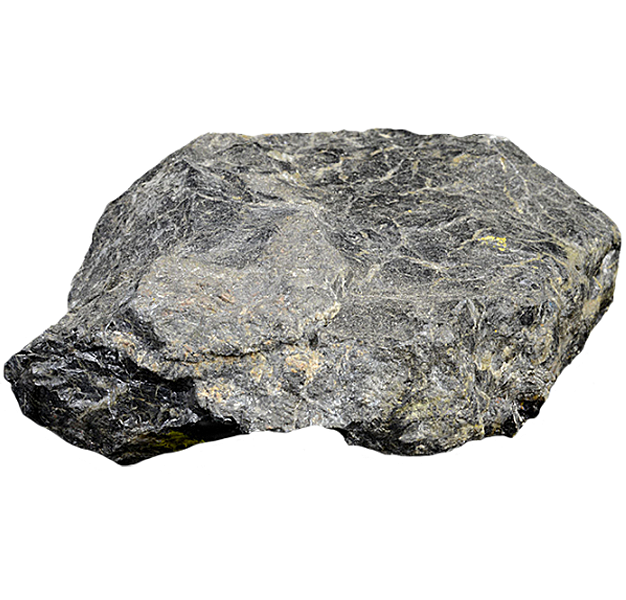
Fact sheet
Uraninite (uranium oxide) is the main ore mineral of the radioactive element uranium, one of the more unusual metals produced in Cornwall. Uraninite occurs in very small amounts in the region’s granites and in associated veins. This specimen comes from South Terras Mine, near Grampound.
South Terras was originally an iron mine but uraninite was found there in the 1880s. A new mining company was formed and by 1890, 33 people were employed. Most of the ore was shipped to Germany for use in the coloured-glassmaking industry.
Marie Curie’s discovery of the element radium switched interest in South Terras Mine away from uranium. Early research suggested radium had profound health-giving properties and its value soared. In 1909 it was one of the most expensive substances in the world. In 1912 a new French company was registered to operate South Terras. One of Marie Curie’s colleagues, Dr. Marcel Pochon, superintended operations at the mine. It finally closed for the last time in the early 1930s.
Chemical Formula: UO2
Specimen no. TRURI: 1979.17.36
Location: South Terras, St Stephen-in-Brannel
Grid Reference: SW 935 924
http://www.mindat.org/min-4102.html
This Collection focuses on Cornwall and West Devon’s mineralogical and mining heritage. The specimens it features are drawn from the collection of the Royal Institution of Cornwall (RIC) held at the Royal Cornwall Museum (RCM).
This collaborative project involving the RCM, the Cornish Mining World Heritage Site and The Open University explores how access to the RIC’s mineral collection and the stories it can tell can be widened using digital technology. It includes radioactive minerals from Cornwall that would otherwise be inaccessible to the public for health and safety reasons.
Sample details
More from this collection
